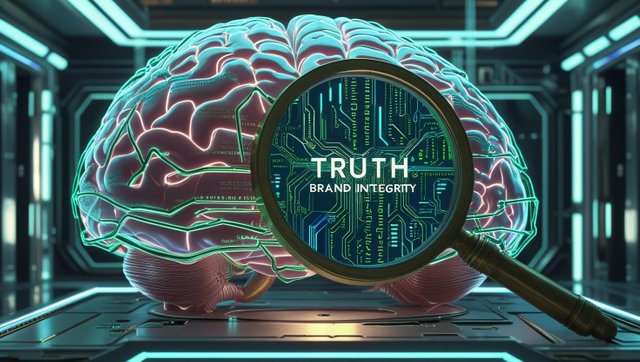Avoiding AI Hallucinations: Controlling Your Brand Narrative in the Generative Era
Introduction
In the era of large language models (LLMs), your brand is no longer shaped solely by your website, social media, or press releases—it’s increasingly influenced by how AI tools interpret, summarize, and synthesize your information.
The problem? Sometimes they get it wrong.
These errors, called AI hallucinations, can lead to misinformation about your products, leadership, pricing, history, or mission. For B2B companies, this isn’t just inconvenient—it’s a threat to reputation, conversions, and trust.
This article explores how to prevent, detect, and control hallucinated narratives about your brand in an AI-driven search environment.
What Are AI Hallucinations and Why They Matter for B2B Brands
An AI hallucination occurs when a language model (like ChatGPT or Gemini) produces incorrect, fabricated, or misleading information with high confidence.
In B2B, this might look like:
Misstating your founding year or location
Misidentifying your product category or pricing model
Confusing you with a competitor
Attributing false partnerships or clients
Misquoting your mission or leadership team
Because these responses often show up in zero-click environments—like voice search, summaries, or chat answers—the misinformation may reach your audience before they ever hit your website.
Real Examples of Brand Misrepresentation by LLMs
Let’s look at how this plays out in real scenarios:
Software Vendor A was incorrectly cited by ChatGPT as offering HIPAA compliance—something they did not provide, leading to a legal inquiry.
B2B Manufacturer B was attributed with an outdated revenue figure, impacting investor perception.
Consultancy Firm C was linked to a quote from a competitor due to shared executive names, eroding credibility in client pitches.
Hallucinations are not malicious—they’re a result of training data gaps, weak contextual signals, or conflicting content.
How AI Constructs Brand Narratives from Limited Data
AI models generate answers by predicting the most probable sequences based on:
Published web content (yours and others’)
Third-party profiles (LinkedIn, Crunchbase, PR releases)
Schema markup and structured data
Citation patterns in training sets
If your digital footprint is:
Inconsistent,
Outdated, or
Sparse,
…the model may “fill in the blanks” with incorrect assumptions.
The Role of Structured Content and Schema in Narrative Accuracy
You can guide AI engines toward accuracy with structured content and schema markup.
Use schema to clarify:
Organization (name, founding date, CEO)
Product (features, pricing, launch dates)
Person (author bios, titles)
FAQPage (common myths or clarifications)
AboutPage (mission, company history)
Also ensure:
Consistent formatting of names, addresses, and taglines
Rich meta descriptions for key landing pages
Canonical tags to unify duplicate content
Structured content increases your chance of being correctly cited in generative responses.
Owning Your Story: Author Pages, Bios, and Brand Assets
AI builds credibility from consistent identity signals.
To own your narrative:
Use author bios with credentials, headshots, and expertise areas
Create a leadership page with structured job titles and LinkedIn links
Maintain an updated About page with verified history and values
Publish branded assets (PDFs, whitepapers, glossaries) with company metadata
These assets teach LLMs how to accurately describe your company—especially in competitive or niche B2B categories.
How to Correct Misinformation in AI and Search Platforms
If you discover an AI hallucination about your brand:
Step 1: Identify the Source
Was it scraped from outdated third-party content?
Does it stem from a misattributed press release?
Is it confusion with a similar brand?
Step 2: Correct the Record
Update all owned content with accurate info
Submit edits to third-party sources (Wikipedia, Crunchbase, directories)
Use schema to reinforce correct data
Issue clarification posts if needed
Step 3: Re-train the Narrative
Publish new, high-authority content that reinforces facts
Encourage reputable sites to link to the updated content
Using Thought Leadership to Train the AI Narrative
LLMs “learn” your brand narrative from:
Blogs and long-form guides
Interview quotes and podcast appearances
Guest posts on industry websites
To shape how AI describes you:
Develop a clear brand voice and POV
Contribute original insights on consistent topics
Reference your brand name clearly in all publications
Example:
“At OptiSystems, we believe scalable AI is the future of B2B automation.”
is more indexable than
“Our company believes in scaling with AI.”
Make it easy for AI to associate your brand with your values.
Monitoring AI Outputs for Brand Accuracy
There’s no alert system for AI hallucinations—yet. But you can track your brand's AI visibility manually.
Audit AI outputs regularly:
Ask ChatGPT or Gemini:
“What does [Your Company] do?”
“Who are the founders of [Your Brand]?”
“What are the core features of [Your Product]?”
Use Perplexity.ai to inspect citations
Set up alerts with Brand24 or Mention.com for false mentions
Monitor FAQs and forums where your brand is discussed
This helps you catch errors before they spread or mislead prospects.
Preparing Crisis Protocols for AI-Driven PR Issues
If AI platforms misrepresent your brand in a damaging way, act fast:
Crisis Response Steps:
Document the inaccurate AI output with screenshots
Publish a correction on your website and social channels
Notify your legal, marketing, and customer success teams
Submit feedback through the AI platform’s reporting tool
Monitor sentiment and clarify with clients or prospects as needed
Build this into your brand crisis playbook—the stakes are too high to wait.
Conclusion
In the age of generative AI, your brand is only as accurate as the data that LLMs interpret.
To avoid hallucinations and misinformation:
✅ Structure your content for clarity and consistency
✅ Use schema markup to reinforce facts
✅ Own your brand narrative across all channels
✅ Publish thought leadership that teaches AI how to cite you
✅ Monitor and correct AI outputs proactively
Remember: AI isn’t trying to hurt your brand—it’s trying to guess based on what it sees.
Your job is to make sure it sees the truth.
